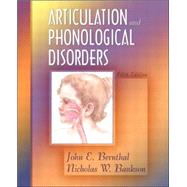
All chapters conclude with “Questions.”
1. Normal Aspects of Articulation (Ray Kent).
Introduction.
Fundamentals of Articulatory Phonetics.
Coarticulation: Interactions Among Sounds in Context.
Aerodynamic Considerations in Speech Production.
Acoustic Considerations of Speech.
Sensory Information in Speech Production.
Generative Phonology.
Optimality Theory.
Which Phonological Theory to Select?
Summary of Levels of Organization of Speech.
Concluding Note on Implications for Speech Acquisition.
2. Early Phonological Development (Marilyn May Vihman).
Models of Phonological Development: The Child as an Active Learner.
Infant Perception: Breaking into the Code.
Infant Production: Interaction of Maturation and Experience.
The Transition Period: From Babble to Speech.
Individual Differences: Profile of Two One-Year-Old Girls.
Systematization and Reorganization: From Word to Segment.
Linguistic Perception Beyond the Transition Period: Representing Speech Sounds.
3. Later Phonological Development (Marilyn May Vihman).
Establishing Group Norms: Large-Scale Studies.
Phonological Processes: Systematicity in Production Errors.
Profiling the Preschool Child: Individual Differences Revisited.
Development of Perception Beyond Early Childhood: Understanding Running Speech.
4. Etiology/Factors Related to Phonologic Disorders (Nicholas Bankson, John Bernthal).
Introduction.
Structure and Function of the Speech and Hearing Mechanisms.
Hearing loss.
Influence on speech.
Intelligiblity.
Speech sound perception in individuals with normal hearing.
Minor structural variations of the speech mechanism.
Major structural variations of the speech mechanism.
Summary.
Oral sensory function.
Motor abilities.
Oral myofunctional disorders/tongue thrust.
Neuromotor disorders.
Cognitive-Linguistic Factors.
Intelligence.
Language development.
Academic performance.
Psychosocial Factors.
Age.
Gender.
Family background.
Personality.
Conclusion.
5. Phonological Assessment Procedures (Nicholas Bankson, John Bernthal).
Phonological Sampling.
Introduction.
Screening for Phonological Disorders.
Informal screening measures.
Formal screening measures.
Summary.
Comprehensive Phonological Assessment: Assessment Battery.
Phonological samples included in the test battery.
Criteria for selecting phonological assessment instruments.
Transcription and scoring procedures.
Phonologic assessment in young children.
Related Assessment Procedures.
Case history.
Oral cavity examination.
Summary.
Audiological screening.
Summary.
Speech sound perception/discrimination testing.
Summary.
Determining the Need for Intervention.
Intellligibility.
Severity.
Stimulability.
Error Patterns.
Types of pattern analysis.
Developmental Appropriateness.
Case Selection Guidelines and Summary.
Target Behavior Selection.
Stimulability.
Frequency of Occurrence.
Developmental Appropriateness.
Contextual Analysis.
Phonological Process Analysis.
Target Behavior Selection Guidelines.
Few errors.
Multiple errors.
Other Factors to Consider in Case Selection—Intervention Decisions.
Dialectal Considerations.
Social-Vocational Expectations.
Computer Assisted Phonological Analysis.
Case Study.
Assessment: Phonological Samples Obtained.
Client.
Age.
Reason for referral.
Case history/speech and hearing mechanism status.
Summary.
Assessment: Interpretation.
Case selection.
Target sound selection.
Summary.
6. Remediation Procedures (Nicholas Bankson, John Bernthal).
Basic Considerations.
Introduction.
Framework for Conducting Therapy.
Temporal sequencing of instructional components.
Goal attack strategies.
Scheduling of instruction.
Pull-Out versus classroom-based instruction.
Intervention style.
Summary.
Making Progress in Therapy: Generalization.
Across-word position/contextual generalization.
Across-linguistic unit generalization.
Across-sound and across-feature generalization.
Across-situations generalization.
Parental assistance with generalization.
Generalization Guidelines.
Dismissal from Instruction.
Dismissal criteria.
Maintenance and Dismissal Guidelines.
7. Treatment Approaches (Nicholas Bankson, John Bernthal).
Introduction.
Treatment Continuum.
Motor Learning Principles.
Teaching Sounds: Establishment of Target Behaviors.
Discrimination/ear training and perceptual training of sound contrasts.
Production training.
Establishment guidelines.
Beyond Teaching Sounds: Treatment Approaches with a Motor Emphasis.
Traditional approach.
Summary of the traditional approach.
Programmed articulation instruction: A detailed example of sequencing goals based on the traditional method.
Summary of the programmed conditioning for articulation.
Context utilization approaches.
Summary of contextually based approaches.
Summary of motor approaches to remediation.
Remediation guidelines for motor approaches.
Linguistic-Based Approaches to Intervention.
Distinctive feature approaches.
Summary of distinctive feature approaches.
Minimal pair contrast therapy.
Summary of minimal pair contrast training.
Cycles approach.
Summary of cycles approach.
Teaching phonology through broader based language approaches.
Summary of teaching phonology through broader based language approaches.
Remediation guidelines for linguistic approaches.
Oral-Motor Activities as Part of Articulation Instruction.
Background.
Oral-motor instruction - rationale.
Assessment.
Treatment.
Summary.
Intervention for Children with Developmental Verbal Dyspraxia (DVD).
Assessment.
Treatment.
Case Study.
Intervention Recommendations.
First consideration—do I use a motor or phonological approach to intervention, or both?
Second consideration—how many targets should I address in a session?
Third consideration—how should I conceptualize the overall treatment program?
Fourth consideration—how do instructional goals relate to the treatment continuum and specific instructional steps?
8. Language and Dialectal Variations (Brian Goldstein, Aquiles Iglesias).
Introduction.
Dialect.
Characteristics of American English Dialects.
African American English (AAE).
Phonological development in AAE.
Eastern American English and Southern American English.
Appalachian English and Ozark English.
Spanish.
Asian languages.
Phonological development in bilingual children.
Assessment considerations for children from culturally and linguistically diverse populations.
Intervention for phonological disorders in children from culturally and linguistically diverse populations.
Summary.
9. Phonological Awareness: Description, Assessment, and Intervention (Laura M. Justice, C. Melanie Schuele).
Introduction.
What is Phonological Awareness.
Shallow levels of awareness.
Deep levels of awareness.
A developmental perspective.
Phonological Awareness as Literacy Development.
The Development of Phonological Awareness.
Awareness of words.
Phonemic analysis and synthesis.
Phonological Awareness and Reading.
Phonological Awareness and Disorders of Speech Production.
The role of the speech-language pathologist
Assessment.
Norm-referenced procedures.
Criterion-referenced procedures.
Dynamic assessment.
Intervention.
Phonological awareness experiences embedded into therapy.
Classroom-based phonological awareness instruction.
Intervention with older children.
The New copy of this book will include any supplemental materials advertised. Please check the title of the book to determine if it should include any access cards, study guides, lab manuals, CDs, etc.
The Used, Rental and eBook copies of this book are not guaranteed to include any supplemental materials. Typically, only the book itself is included. This is true even if the title states it includes any access cards, study guides, lab manuals, CDs, etc.